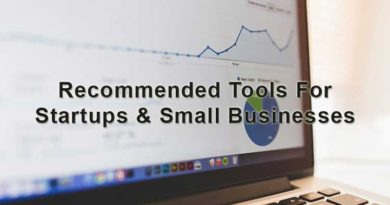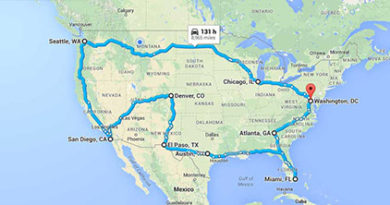Ok, You Launched, Now What? How To Increase Traffic To Your New Site
It’s so easy to start a business these days, especially with all the new tools available. Historically difficult tasks can now be accomplished easier, cheaper and faster. No longer do you need a specialized skillset and a lot of money to launch a business.
Actually launching a new business isn’t the main challenge anymore– it’s getting noticed and spreading the word after you launch. Sure, we always hear about that unicorn startup that gets featured in ProductHunt and becomes a hit overnight, or the startup that gets featured frontpage of TechCrunch and then lands a multimillion dollar seed investment the following week, but that’s because no one covers the other 99.99% of businesses that launch and then hear nothing but crickets.
This is not a “how to build it” guide. For that, you should check out how to launch a startup for free or how to launch a startup fast. This is a guide for all those startups who launched and heard nothing but crickets, or for those startups who are about to launch and want to to make sure they have an effecting marketing plan to get noticed.
First, make sure you have the right infrastructure in place
Chances are slim that your business will be an overnight success, but that doesn’t mean you shouldn’t try. If anything, it means that you should do everything in your power to best leverage the little traffic that your website does receive. If you happen to be one of the lucky startups that receives a ton of early traffic, you’ll be in an even stronger position to capitalize on it. Here are the five things you need in place before sending any traffic to your website–
Analytics
The advantage that digital marketing has over traditional advertising is that you can set up in-depth analytics to monitor your results very, very accurately. This gives you the power to test many marketing methods at once, determine which are successful, and then ramp up what’s working and re-evaluate what’s not. But to do this, you must have the right analytics infrastructure in place.
Social Sharing
Every single person that visits your website is a valuable asset since they will probably be few and far between in the very beginning. This is why you must make the most of every single visitor to your site. One of the best ways to do that is to try and turn one visitor into ten more– do that enough times and you have the beginnings of viral growth on your hands. How can you leverage one visitor into ten more? By encouraging them to share your site on social media. The two most effective social sharing plugins I’ve come across are AddThis and SumoMe.
Start cultivating your email list
Regardless of what time of site you have, email will probably be your most consistent and most reliable source of inbound traffic. The earlier your start cultivating your email list, the better. Leveraging email as best you can comes down to three main points–
First, you must figure out which mailing list software you are going to use– I prefer MailChimp, but there are many to choose from.
Second, you must figure out how often you are going to email your subscribers and regarding what– I prefer more personal emails on updates with progress regarding the business, as well as big news, updates and promotions. Basically, anything that would add value to their lives if they knew about it.
Finally, you must figure out how you’re going to grow your list. If you’re running a blog on WordPress, the plugin Optin Forms is very good. If you’re running an ecommerce site, giving your customers the option to subscribe to your email list during check-out is a good option. It’s very important to get this feature up before people start visiting your site so you have the opportunity to convert all visitors into subscribers.
Retargeting
The goal with retargeting is to give yourself the ability to reach back out to someone who already visited your site. If someone visited your site, they’re probably a good potential customer. For example, let’s say someone visits your site while you have a retargeting pixel in your website’s code. That person is “tagged” and saved in a list, and you can display ads to them in places like their Facebook or Twitter newsfeeds, or banner ads across the web. Because they are already familiar with your website, there’s usually a higher chance you can get them back to your site. My favorite retargeting tool is definitely Perfect Audience, but Adroll is good as well.
Split Testing
Split testing means you show 50% of your visitors one version of a page and the other 50% another version of the page, and then you track which one leads to more sales.
Services like Optimizely are free and will tell you when a test yields statistically significant results. Visual Website Optimizer is another good option. You can also leverage services like Qualaroo or SurveyGizmo if you want to try and gather data directly from your visitors.
This suggestion might be a bit controversial because new websites typically don’t receive enough traffic to provide statistically significant results from split testing. While it’s true that you should not base decisions from any split test unless the results are statistically significant, you can get statistically significant results quickly through ways other than enormous amounts of traffic– test HUGE changes to a site. If the changes are big enough, you won’t need as much traffic to determine a winner. Here’s 9 A/B Split testings ideas for your website to get you going. Even if you’re not receiving a lot of traffic, you need to be testing something, otherwise you’re not tweaking, you’re guessing.
Second, share your site on all major social media platforms
Say what you want about social media, but it’s a necessary evil. Social media is less about BEING ON the platform and more about HOW YOU USE the platform– use it correctly and it can be an amazing, free driver of targeted traffic, but use it poorly and it can be a huge waste of time and money.
Facebook
With organic traffic from Facebook now all but dead, there’s only two true reliable ways to get inbound traffic to your website from Facebook– either pay for ads, or construct highly viral posts. Since there are plenty of guides on how to properly set up facebook ad campaigns, I’ll focus on the second. What makes a Facebook post viral? A call-to-action to tag others, multiple pictures, a link, and a strong message. Here’s a great example that you could learn a lot from simply by studying and replicating.
Twitter
I once heard someone explain social media like this– Facebook is the place you engage with people you know, and Twitter is a place where you engage with people you don’t know. Used correctly, Twitter is a great way to inject yourself into a conversation and find new customers. As long as you follow proper Twitter etiquette and truly add value to others, it won’t be considered spam.
Pinterest
Pinterest has become one of the best sources for inbound traffic, but there’s certainly a learning curve. Because Pinterest is also very graphics-heavy, either acclimate yourself with Adobe Photoshop or hire a graphics designer, because the quality of your Pins will directly determine how viral they will go.
Reddit
Be very careful with Reddit. My suggestion for everyone regarding Reddit has always been to simply be a part of the community, and ONLY engage your own content when it truly adds value to the subreddit. If you aren’t currently a member, sign up, get to know the community for a while before even considering using it as a form of inbound marketing.
StumbleUpon
StumbleUpon is one of those special situations– it’s hard to control, but it takes two seconds to submit a page, and it has potential to drive great traffic. Always worth the effort.
Share on Linkedin
People always share links on Facebook and Twitter, but Linkedin is just as good if not better platform to post links to. Just keep in mind who your audience is.
Third, go for the big wins
Let’s face it– we’re all envious of the unicorn startups that get a windfall of press and recognition early on and become overnight success stories. Relying solely on “big wins” that are determined almost exclusively by luck is a terrible strategy, but ignoring those tactics completely is equally as foolish. Here are three quick ways you could put your startup in a position to get quick, significant traffic–
ProductHunt
ProductHunt itself is pretty much a unicorn success story, and they did that by making it easier to give others that unicorn success story of their own. Only the best-of-the-best make it onto ProductHunt, so if you think your website has what it takes, submit it– it only takes a few seconds and the payoff could be huge.
HackerNews
HackerNews is essentially a place for startup news where the crowd votes the best stuff to the top. Same concept as ProductHunt as well– takes a few second to submit content and has potential for huge payoff. Creative titles are key, and be sure to check back to be a part of the follow-up conversation, if there is any.
Digg
Digg isn’t as popular as it once was, but damn can it still drive traffic. Digg’s algorithm is tough to decipher, but many have claimed it gives more priority to well-established domains, so it might make sense to post content to Medium or Linkedin Publisher instead.
Fourth, start building your supporting traffic streams
While writing content for your website is important for a long-term SEO strategy, unless you already have a large audience reading that content, it’s simply won’t do enough to drive traffic in the short term. For this, you need to add content to platforms people are already engaging with.
Slideshare
Slideshare is one people often overlook, but it provides great SEO benefits and has its own loyal fanbase. Convert your most useful content into a deck and submit it to Slideshare, you won’t regret it. If it’s good enough, it might make it to the front page, and then you’re off to the races.
Medium
Medium is a blogging platform that has a very loyal fanbase, so overlooking it would be a mistake. Don’t make the mistake of copy/pasting your content from elsewhere onto Medium– you won’t get the most out of it that way. Instead, get creative– Medium rewards creativity. Either write a summary of other content, write short thoughts, or write long-form– but keep it unique to Medium. If your content gets a good percentage of its readers to engage, Medium will promote your content via email and other methods– that’s the goal here.
Linkedin Publisher
Treat Linkedin Publisher as you would Medium, but in a more professional light. And like Medium, Linkedin will promote your content on their own if they see that it’s getting a good response from people who read it, which would mean that people are liking, sharing and commenting on your post. This is what you’re aiming for here. Also like Medium, keep the content unique to Linkedin.
Answer questions on Quora
Quora is an amazing platform for a number of reasons. Mainly, it’s a way to provide value to others who are looking to have specific questions answered, and gives you the opportunity to respond in a longer format to provide as much value as possible. It also provides very strong SEO benefits, especially for long-tail, specific keywords.
Blogger & press outreach
No matter what you’re offering, being recommended by a trusted third party is one of the best ways to boost your brand and increase your traffic. And as long as you have all of the structural elements in place, you can capture a decent number of those new visitors and make them part of your own audience for the future.
Fifth, launch a contest
Contests can be a great way to both introduce your website to new visitors on a large scale and also encourage word-of-mouth viral growth, but only if a smart strategy is used with the correct tools.
Kickofflabs
The first tool I suggest is KickoffLabs. It allows you to provide each contestant with a unique trackable link to share with their network, making it possible to provide incentives to those who share the most. A tool like this is perfect for pre-launch landing pages, as well as Thank You confirmation pages. This is the exact strategy that wildly successful sites like Harry’s used, and now you can replicate that successful strategy without all the complicated coding.
Gleam.io
The other tool I highly suggest is Gleam.io, and it’s more of a contest platform in the traditional sense. The great thing about it is that you can embed it on your own website, and now since you have retargeting, social sharing and lead generation tools on your website, all new visitors are that much more valuable. Gleam.io makes it very easy to encourage people to take action on social media, essentially encouraging people to spread the word. Successful companies such as Beardbrand have used Gleam.io for this exact purpose, but the key here is to make sure you’re providing an outstanding incentive for people to take part in your contest, and that you choose easy actions and intriguing wording. When in doubt, just follow Beardbrand’s lead on this and you won’t go wrong.
Sixth, start experimenting with paid traffic
If you’ve gotten to this point and you’re starting to see the momentum build, great! It’s a pretty safe bet that if those free methods have been working well, these paid methods will just be a way to ramp up quicker. If you’ve gotten this far and still have not seen much momentum, there’s three things you should be cognizant of–
First, is there a better way to word your value proposition on your website?
Second, are you trying to attract the right sort of visitors to your website?
Third, are you getting enough visitors to your website?
The first issue is something you might have to go back to the drawing board for. But if you believe it’s a combination of the second and third points, and you have some money to experiment with, paid advertising could be the cure to your launch woes.
Facebook
As mentioned previously, paid ads are basically the only way Facebook can be worth your time anymore. There are so many guides available online so I won’t get into the details here, but keep in mind that if you’re working with newsfeed ads, try to incorporate the viral aspects of a facebook post we mentioned earlier, as that will only leverage your ad even more.
Twitter
Twitter ads are great to grab someone’s attention, but because you only have limited characters, you need to really have a grasp on what your visitors are looking for. Referencing what’s been working with your A/B testing is a great start. And make sure you leave room for pictures, as you will see your engagement rise if you attach a picture to a tweet.
Reddit
Just because you’re paying to be shown on Reddit doesn’t mean that all etiquette goes out the window. In fact, if you don’t respect the community, the best case scenario is that your ad is just simply ineffective, but worst case scenario would be that the community frowns upon your engagement. Don’t just post your link– add value, and be sure to be available for follow up questions and comments.
Pinterest
Take a look at which of your pins are getting re-pinned the most, and considering paying to promote them. Pinterest is one of the most viral platforms around, and if you already have a pin that’s performing well, paying to promote is it akin to pouring gas on a fire, in a good way.
Seventh, rinse and repeat
If things are going great now, perfect! Start back at the beginning and tweak things here and there– there’s always room for improvement! If things aren’t going well, start back at the beginning but make some BIG changes, whether it’s to the copy, the UX design or the offer.
Launching a website, or any startup in general, is an ongoing process of gradual improvements. As long as you’re making progress, seeing traction, and improving as you go, you’re heading in the right direction!




Thanks for the mention Stephen 🙂